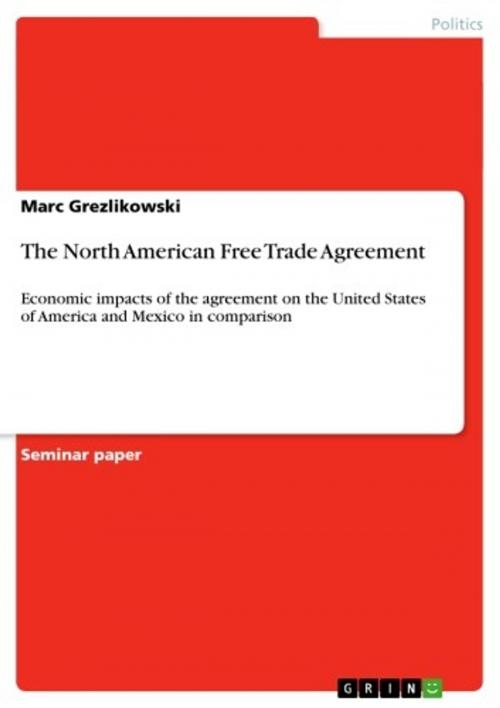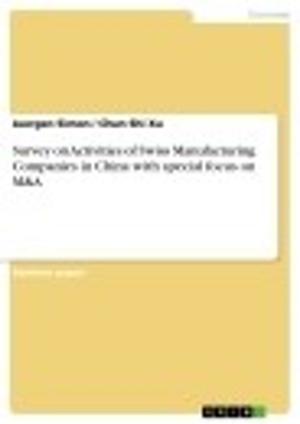The North American Free Trade Agreement
Economic impacts of the agreement on the United States of America and Mexico in comparison
Nonfiction, Social & Cultural Studies, Political Science| Author: | Marc Grezlikowski | ISBN: | 9783640381845 |
| Publisher: | GRIN Publishing | Publication: | July 23, 2009 |
| Imprint: | GRIN Publishing | Language: | English |
| Author: | Marc Grezlikowski |
| ISBN: | 9783640381845 |
| Publisher: | GRIN Publishing |
| Publication: | July 23, 2009 |
| Imprint: | GRIN Publishing |
| Language: | English |
Seminar paper from the year 2007 in the subject Politics - International Politics - Region: USA, grade: 2,3, Free University of Berlin, language: English, abstract: In the wake of globalization, many countries are reducing trade barriers and tariffs, resulting in a rise of free-trade areas in which the participating countries trade freely among each other without any restrictions. The goal of these agreements is the increase of wealth in each nation's economy. To reach this goal, the USA, Canada and Mexico negotiated the North American Free Trade Agreement (NAFTA) which came into effect on January, 1st 1994. It was the world's largest free-trade area with a combined population of over 360m people and a total GDP of 6$ trillion. Today, the NAFTA area comprises a 12.5$ trillion economy and a 430m strong population. For the first time, two highly industrialized, rich countries affiliated themselves with a poorer, newly industrialized country. At the time of its ratification, the agreement was extremely controversial in all three member states and opinions in political camps differed vastly. Supporters of the contract were mostly big companies and investors who were hoping that it would loosen restrictions and barriers on the capital market. Opponents of the agreement were trade unions which, especially in the United States, railed heavily against it. They feared outsourcing and massive job displacements to Mexico, a country in which labor is incredibly cheap and environment protection laws are lax or do not even exist. In Mexico, landowners were skeptical of NAFTA because they feared unfair competition with US-American farmers who are still to this day greatly subsidized by the government.
Seminar paper from the year 2007 in the subject Politics - International Politics - Region: USA, grade: 2,3, Free University of Berlin, language: English, abstract: In the wake of globalization, many countries are reducing trade barriers and tariffs, resulting in a rise of free-trade areas in which the participating countries trade freely among each other without any restrictions. The goal of these agreements is the increase of wealth in each nation's economy. To reach this goal, the USA, Canada and Mexico negotiated the North American Free Trade Agreement (NAFTA) which came into effect on January, 1st 1994. It was the world's largest free-trade area with a combined population of over 360m people and a total GDP of 6$ trillion. Today, the NAFTA area comprises a 12.5$ trillion economy and a 430m strong population. For the first time, two highly industrialized, rich countries affiliated themselves with a poorer, newly industrialized country. At the time of its ratification, the agreement was extremely controversial in all three member states and opinions in political camps differed vastly. Supporters of the contract were mostly big companies and investors who were hoping that it would loosen restrictions and barriers on the capital market. Opponents of the agreement were trade unions which, especially in the United States, railed heavily against it. They feared outsourcing and massive job displacements to Mexico, a country in which labor is incredibly cheap and environment protection laws are lax or do not even exist. In Mexico, landowners were skeptical of NAFTA because they feared unfair competition with US-American farmers who are still to this day greatly subsidized by the government.















